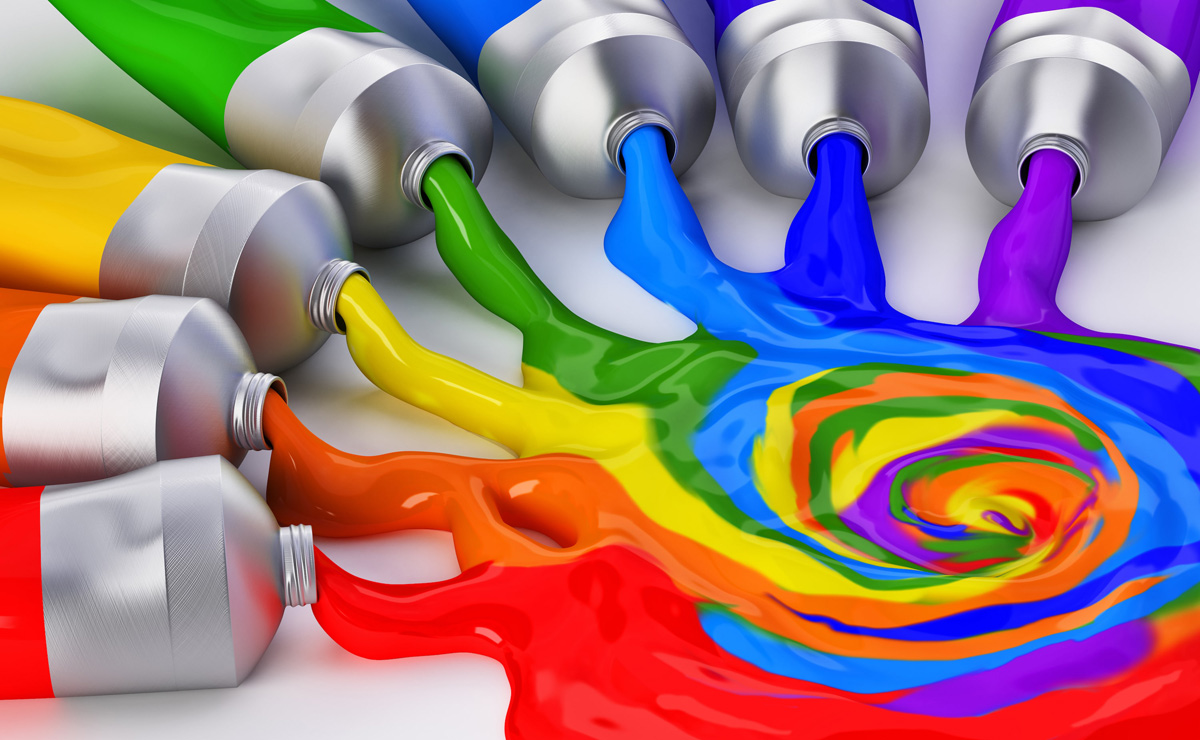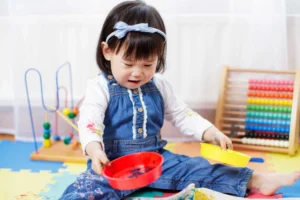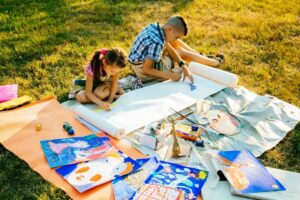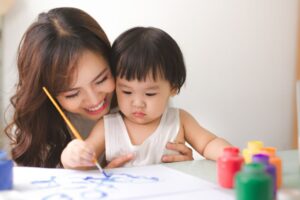Discover The Magic Of Colour Mixing
![]()
- Posted by abrakadoodle.com.sg
- Categories Kids Art Activities
- Date 22 February 2021

Red turns to orange. Yellow turning to green. While blue changes to purple. Learning how new colours are made is an exciting way for toddlers and young children to experience and understand colour.
The process is awesome both for parents as well as their little ones. Watching for those moments of awe and surprise lighting up a young child’s face is in itself the biggest reward.
Mixing two colours and creating a brand new colour is never boring. It is magic that children enjoy and will spend their playtime hours exploring this powerful process. Topping this is setting up the colour mixing sessions at home is simple, easy and inexpensive.
Table of Contents
ToggleLet the magic begin
All you need are a few eyedroppers or better still brand new disposable syringes without their needles, a few empty ice cube trays, and a jug full of water. You can choose using food colours or using three small squeezy plastic bottles filled with the primary colours, red, blue and yellow washable watercolors. With these set up on a table, you are more or less set to creating every other colour.
So let’s start with the easy way first. What do you predict will happen when mixing the primary colors, like mixing red and yellow? Can you guess the colour you may get? Repeat this by mixing red and blue & blue and yellow. Try it. See for yourself.
Now imagine the thrill when children watch the colours change? For the first 10 minutes or so, encourage them to play with only two colours in each slot of the ice cube tray. Then leave them to free play. Let them loose. Their screams of delight will electrify the room and stimulate their minds like nothing else can.
Children will begin to learn and understand about hues and shades of colours all on their own – that’s the magic of colour mixing in real-time. After all the slots used up, just tip the ice cube tray over into a sink and get the children to start all over again. You will love when kids learn to reset their own activity.
Invite children of all ages
Getting the colours you want is all about mixing the colours in the right way. Start with the special colours you already know about — Red, Blue and Yellow. These are the primary colours. Mixing these base colours begins to unfold the magic of colours in front of their eyes.
By combining these colours, you can make all the colours in a rainbow. In fact, by mixing primary and secondary colours, you can make just about any colour in the world. This engaging activity will provide hours of fun and surprises for preschoolers as young as 4 months to 28 months! The fact bear in mind, earlier they start, the more children will grasp that play is the best way to learn just about anything.
Another thing you will achieve by teaching very young children to mix colours is, getting them to practice their gross and fine motor skills and learning a little of science in the process. An opportunity for them to exercise scientific thinking: make predictions, observe, compare, reason, experiment and evaluate. Skills that lay the foundation to excel later at school.
Colour mixing activity tends to take on a life of its own and children will never seem to get enough of it. A session can go on for days if not interrupted. But what a great time it will be to watch science coming to life and unfolding its magic. Inspire thinking. Keeping the interest alive without being boring.
While everyone is totally engrossed in mixing colours, you could all try another experiment together which is sure to make the jaws drop and blow the barriers to learning away forever!
Walking with colours
Introduce a bit of science, a little bit of wonder, and a whole lot of fun to the colour mixing process. For doing this experiment you will need five clear plastic glasses. Three of them filled with clear water and two left empty.
In the three glasses that contain water, add the primary colours leaving the two glasses in between empty. Follow the ROYGB style. Start with red, then an empty cup to make orange, yellow, then an empty cup for green, and finally the blue.
Allow a child to squeeze as many drops of colour as she desires. Let her squeeze in the Yellow! Drop in a few drops of blue! Adding food dyes, plays a huge part in the fun. And getting a child to do this on her own will make her fingers strong too.
The act of squeezing the drops of colour out of the plastic bottles or through the syringes or the eye droppers brings an additional bonus. Squeezing is perfect for honing a child’s fine motor skills further.
Making a rope out of paper towels
Once all the primary colours are added, you need a rope made out of paper towels. Let children chip in and help you roll up paper towels and make a single paper rope, long enough to get to the bottom of each plastic cup and out into the other cup…
Hold one end of this rope and push it down into the first cup, make sure the rope sits flat across the bottom of the cup and comes up and gets inside the second cup…and so on… until you have all the cups lined up. Connecting one cup with another cup next to it with the paper rope. It ends up looking like a colourful caterpillar that dips into all the cups, going into one and coming out of the other.
Wait & watch
Let the jars sit for a while, just watch the colours seeping through and start to climb up the towel rope, (science calls it capillary action). The colour inside each one of the cups is absorbed by the paper rope and you can all see the colours working their way up and merging with each other.
This merging may begin to happen slowly or quickly, depending on how tightly the paper rope is twisted. Loosen it to make it go fast, tighten it to slow the merging down. The end result will be a bright, gorgeously vibrant caterpillar your child will be proud to have created!
Once all the colours merge, it will look spectacular! Your child will be so proud of her colour craft that you will want to frame and hang it in her room. She will also be proud that she knows so much more about colours. Her curiosity had led her from playing with primary colours to start experimenting with tertiary colours.
Leading her beyond just being excited about her paper caterpillar, she’d want to show it off and talk with anyone who will be interested in knowing what she learnt about colours. An expert, all fired up and ready to share her knowledge.
About Abrakadoodle
This is the kind of process art learning experiences that inspire children to think differently, be innovative, and devise ways that teach interesting things found in the real world. Changing the way children discover and imagine. Turn into ignited minds that begin to play and learn like never before. www.abrakadoodle.com.sg
You may also like

Aims & Objectives Of Art Activities For Preschoolers

Why Fun Outdoor Art Activities Are Important

